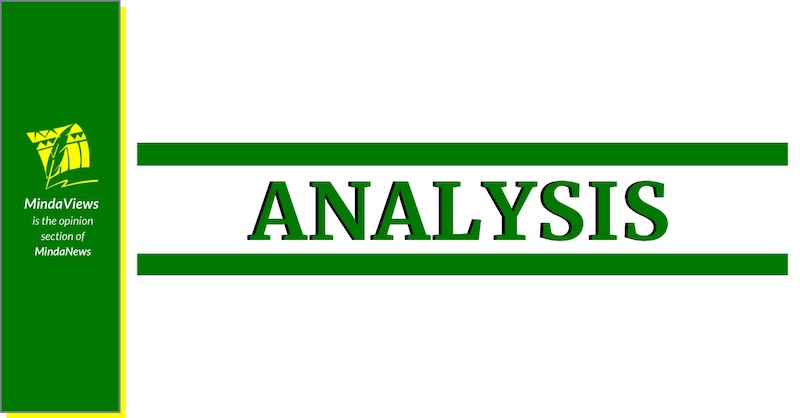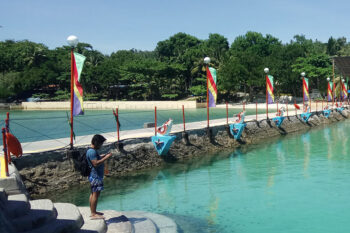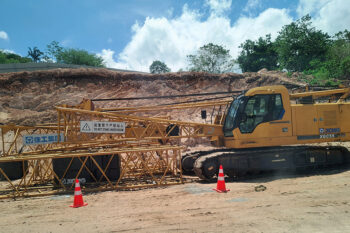
(Presented by Dr. Augusto “Gus” Gatmaytan on 25 March 2021 during the roundtable discussion “What’s in a Name? Views from Anthropologists on ‘Lumad,’” the first of a two-part series triggered by the resolution of the National Commission on Indigenous Peoples on the use of ‘Lumad,’ a collective term that has been used to refer to Indigenous Peoples in Mindanao since the late 1970s. The second part, ‘Kinsa ang mga Lumad? Views from Indigenous Leaders’ is on March 27. The two-part series was organized by the Ugnayang Pangagham-Tao or Anthropological Association of the Philippines).
This roundtable discussion was prompted by the National Commission on Indigenous Peoples (NCIP’s) Resolution no. 08-009-2021, dated 2 March 2021, denouncing the use of the term ‘Lumad’ to refer to indigenous peoples of Mindanao.
Please allow me then to focus my remarks on this resolution.
The NCIP’s resolution claims that indigenous leaders are ‘clamoring’ for an end to the use of the name ‘Lumad’ to refer to the indigenous peoples of Mindanao. If there is such a clamor, then it is a very quiet one. I have been working with indigenous communities across Mindanao since the 1980s, and I have not encountered any indigenous leader actively campaigning against the use of the name ‘Lumad.’
Certainly, there have been and are people who dislike it, or do not use it, or cannot relate to it, but this hardly amounts to a ‘clamor.’ What evidence is there of this ‘clamor’? Everyone was getting on with their lives until the NCIP came up with this invented crisis. Why is the NCIP trying to project the existence of such a ‘clamor’?
The resolution states that the ‘emergence’ of the name ‘Lumad’ is ‘marred’ by its association with the Communist Party of the Philippines-New People’s Army-National Democratic Front (CPP-NPA-NDF). As the Ecumenical Commission on Indigenous Peoples (ECIP) recently pointed out however, the ‘emergence’ of the term is linked to the pioneering pastoral work of the Catholic Church in Mindanao and Sulu in the 1970s, which developed without an ideological agenda, even as it strove to support indigenous communities suffering at the hands of a repressive state and exploitative business interests.
It would thus seem that rather than the CPP-NPA-NDF coining or appropriating the term, they were only following the lead of the Church and its indigenous community-partners by ‘riding on’ their growing or continuing use of the name. But even if the CPP-NPA-NDF did use the name in their organizing or fund-raising work, what of it? Should we similarly stop using the words ‘Islam’ or ‘Islamic’ because it has been marred by its association with the Maute group and the extremist interpretation of Islam championed by ISIS?
The resolution decries how the name ‘Lumad’ is ‘not an indigenous term.’ However, there is no pan-Mindanao indigenous term for the aboriginal peoples of the island, taken as a group. The resolution does offer alternative terminology, but these are all in English or Filipino/Tagalog. ‘Lumad’ may be a Visayan term, but at least it does not recall our colonial subjugation or reiterate the political and cultural dominance of imperial Manila. More importantly, it was the indigenous communities of Mindanao themselves who gradually adopted or appropriated the name ‘Lumad’ as a way of asserting a shared identity or location. In other words, they have made it their own; just as the Bangsamoro have made the very non-indigenous term ‘Moro’ their own.
The resolution argues that ‘Lumad’ should not be used because the LMPF leaders who allegedly adopted the term are not the ‘recognized representatives’ of the indigenous peoples of Mindanao. First, it is not clear at all if it was the LMPF that first adopted the name ‘Lumad.’ Given the information brought to light by Carol Arguillas of MindaNews, that the name had been in use since the late 1970s, the resolution’s claim becomes highly debatable. Other groups or individuals might have previously adopted the name already, but had neglected to document the occasion. Second, this argument betrays its proponents’ lack of historical awareness.
In the 1980s and 1990s, there was no island-wide mechanism for selecting the ‘recognized representatives’ of all indigenous peoples of Mindanao. On one hand, the indigenous groups of Mindanao have historically been uncentralized, acephalous polities, organized into largely autonomous settlements or villages. On the other, there were in the 1980s and 1990s only separate, relatively small networks of communities and leaders, linked together by Churches, or by NGOs, or by indigenous peoples organizing initiatives, or by local politicians, or by the Presidential Assistant on National Minorities (PANAMIN) and the Office of Southern Cultural Communities (OSCC).
What seems to have happened is that indigenous leaders, advocates or organizations — on their own, or taking their cue from Church workers, non-government organizations (NGOs), or yes, leftist ideologues — began to refer to themselves as ‘Lumad.’ This appropriation of the Visayan word ‘Lumad’ represents the historical moment when indigenous leaders in communities across Mindanao, who until that point had been relatively isolated from each other, realized that they shared histories of displacement, violence, and discrimination; faced a common set of problems; and similarly aspired to recognition and development. These shared characteristics provided the basis for a collective identity, an identity they have over time chosen to refer to as ‘Lumad.’
As members of marginalized groups, these leaders and advocates could not force other peoples, groups or communities to do the same. But over the succeeding forty years, other indigenous organizations and communities all across Mindanao, have similarly adopted or used the name ‘Lumad.’ This suggests that with their growing links to the political, economic and cultural mainstream, more and more indigenous communities and organizations have also begun to think of themselves not as isolated communities, but as a part of the indigenous peoples of Mindanao, taken as a group. This is the beginning of a pan-Mindanao indigenous consciousness, and of what Karl Gaspar calls the ‘Lumad social movement.’
This is not to say that they have abandoned their own names for their own peoples. The politics and processes of identity formation allows someone, for example, to be:
1.an individual;
2.a member of a family, as designated by a surname or family name;
3.a member of the Arumanen Manobo of Carmen, North Cotabato;
4.a member of the Cotabato Manobo group, along with the Ilianen and Kirintiken Manobo,
but not the Umayamnon or Adgawanon Manobo of the Agusan region;
5.a Lumad, along with the Subanen and Mandaya, but not the Kalinga or the Buhid;
6.a member of the indigenous population of the Philippines;
7.and a Filipino.
The complex and fluid nature of identity formation provides members of indigenous groups different ways of referring to one’s self or one’s group in differing contexts, and/or for different purposes. These various ways of describing one’s self do not contradict each other. One does not surrender one’s identity as Higaunon or B’laan by using the name ‘Lumad,’ any more than being a proud Cebuano makes one less Filipino. No one is confused by this, except perhaps for the NCIP.
In the field, it is the indigenous communities’ own names for themselves that are used in local settings. The term ‘Lumad’ is employed only as a sort of casual or conversational alternative for the local people’s name, or when referencing the indigenous peoples of Mindanao as a group; e.g., to compare the situation of indigenous peoples in Mindanao with those of Palawan. In other words, it is used as a collective name to refer to the indigenous peoples of Mindanao, in the way that ‘Igorot’ or ‘Kaigorotan’ and ‘Moro’ or ‘Bangsamoro’ are collective terms for groups of peoples who share certain historical, political and cultural characteristics.
What is more, people in the communities do not narrowly associate the term with the left. Indigenous groups, organizations and leaders of different political persuasions use the name to refer to the aboriginal peoples of Mindanao, as a group. Thus community residents speak of Lumad who are members of the CAFGU, of Lumad who are members of the NPA, and of Lumad who are neither.
The resolution finally asserts that there are no ancestral domains or territories under the name of ‘Lumad’, implying that there is no such things as a ‘Lumad’. It is true that there are no territories under the name of ‘Lumad,’ but this proves nothing. The name ‘Lumad’ was not intended to replace the various endonyms of indigenous peoples of Mindanao, nor is it used that way. Members of indigenous peoples or communities know that they are T’boli, for example; and that their domains and territories belong to them as members of the T’boli people, not as ‘Lumad.’ It is not surprising then that they claim their ancestral domains as T’boli.
Having said that, there are still circumstances when they might find the name ‘Lumad’ to be useful.
The NCIP resolution thus fails to justify its call for ending the use of the name ‘Lumad.’ What the NCIP resolution does achieve is to reflect this moment in our political history, when we witness the dawn of an Orwellian dystopia where the state seeks to control how people think by controlling how people use language. It seeks to persuade people that using the name ‘Lumad’ is to be associated somehow with the CPP-NPA-NDF.
In doing this, the NCIP has arrogated unto itself the power to determine who the indigenous peoples are, and how they are to be called. But this right belongs not to the NCIP, nor even to the Philippine state. — which is historically responsible for much of the injustices and inequities suffered by indigenous peoples — but to the indigenous peoples themselves.
Indigenous peoples have the right to self-ascription, which is itself rooted in their fundamental right to self-determination. They have the right to determine, among other things, their own name or names. There are examples of Philippine groups choosing how they are to be called: The best-known example are the Ilongot of Nueva Vizcaya, who sometime in the 1980s began to call themselves Bugkalot. Here in Mindanao, the Bukidnon of Songco, in Bukidnon province now call themselves Talaandig; and some of the Manobo communities in the Davao-Bukidnon boundary area now call themselves Matigsalug.
These choices have all been respected; why should the case of ‘Lumad’ be any different? If indigenous organizations or communities wish to call themselves ‘Lumad’ to reference their being part of the indigenous population of Mindanao, then that is similarly their right. The NCIP should honor and respect their will, refrain from agitating or terrorizing others from using it, and listen to and learn from their Lumad constituents.
(Augusto “Gus” B. Gatmaytan, PhD, has been working with Indigenous Peoples since 1985. He obtained his law degree in 1987 from the University of the Philippines, after which he co-founded the Legal Rights and Natural Resources Center (LRC), a non-government organization that today continues to provide legal and other services to indigenous communities across the Philippines. In the 1990s, the worked with Manobo and Banwaon communities in Agusan del Sur province as legal consultant and community organizer. In 1999, he was among the lawyers who defended the constitutionality of the Indigenous Peoples Rights Act in oral arguments before the Supreme Court of the Philippines, in the case of Cruz and Europa vs. Secretary of the Environment, et al. His work with indigenous communities in Mindanao inspired him to study Anthropology, eventually receiving his doctorate in that discipline from the London School of Econoomics and Political Science in 2015. He currently teaches at the Ateneo de Davoao University and is Director of the Ateneo Institute of Anthropology)







